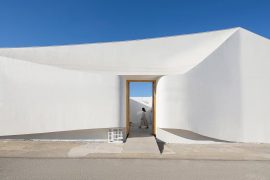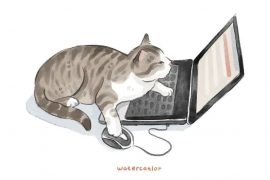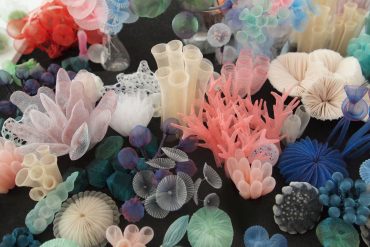The way Xilan Kapu, also known as Tujia Brocade, makes people feel is similar to that of the Tujia dialect. That is, they are closely connected to the richness of the land and daily life. Perhaps more importantly though, they are both heading towards extinction if left unprotected. The main area of the China Tujia Brocade Museum in Zhangjiajie, Hunan Province, was completed in 2022.
The giant central installation, the “Flower of Tujia,” is 8m wide, 13m tall, and 8m deep. It is made by 150,000 meters of red brocade threads. It reaches all the way from the floor to the ceiling, compelling people to come closer and explore this traditional handicraft that has remained silent for thousands of years.

The China Tujia Brocade Museum is dedicated to the Tujia brocade handicraft, which is considered to be part of the country’s national intangible cultural heritage. Zhangjiajie Guaiyaomei Tujia Brocade asked YI+MU Design Office to design the interior of the museum. It took them four months to complete the central installation. This collaboration between Vancouver, Beijing, and Zhangjiajie is like a flower slowly blooming across time and space.

For the Tujia women who weave these patterns, completing the more than 30 steps to produce Xilan Kapu is like breathing. They weave the ancient Tujia people’s idea of the sun as the fire of life and their burning and peaceful longing for life into the “colorful and visible” Xilan Kapu. This loom technique has been used for thousands of years.
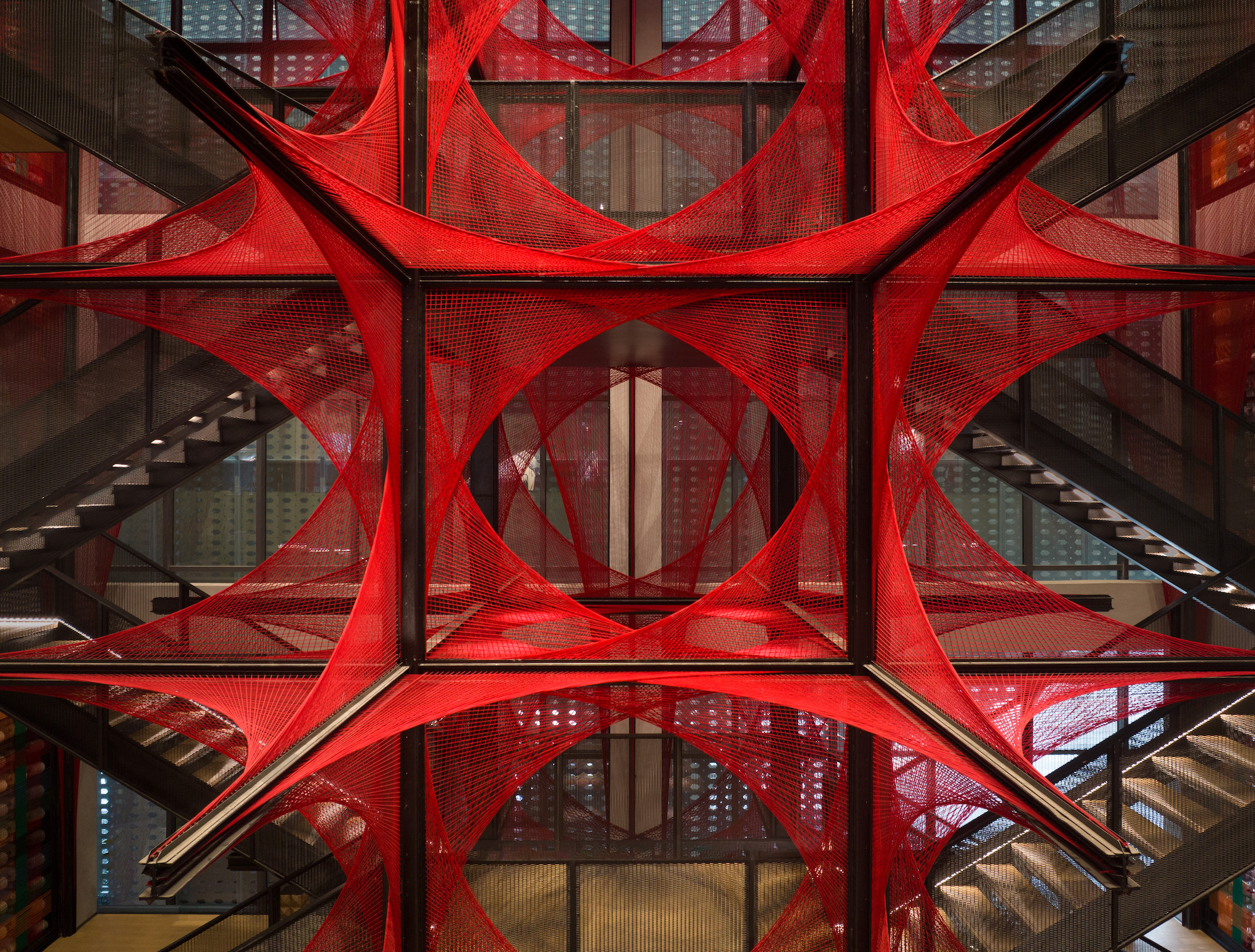
A vertical passage is created by two steel staircases, which are connected by two platforms located at the center of the installation, bringing the staircases and the installation together. The linear structure of the industrial staircases is derived from the hexagon found in the Xilan Kapu pattern. It is also used in the hollow shape of the outer steel structure. When the subtle graphics emerge and unfold, the contradiction and tension of the space invite new imaginings.
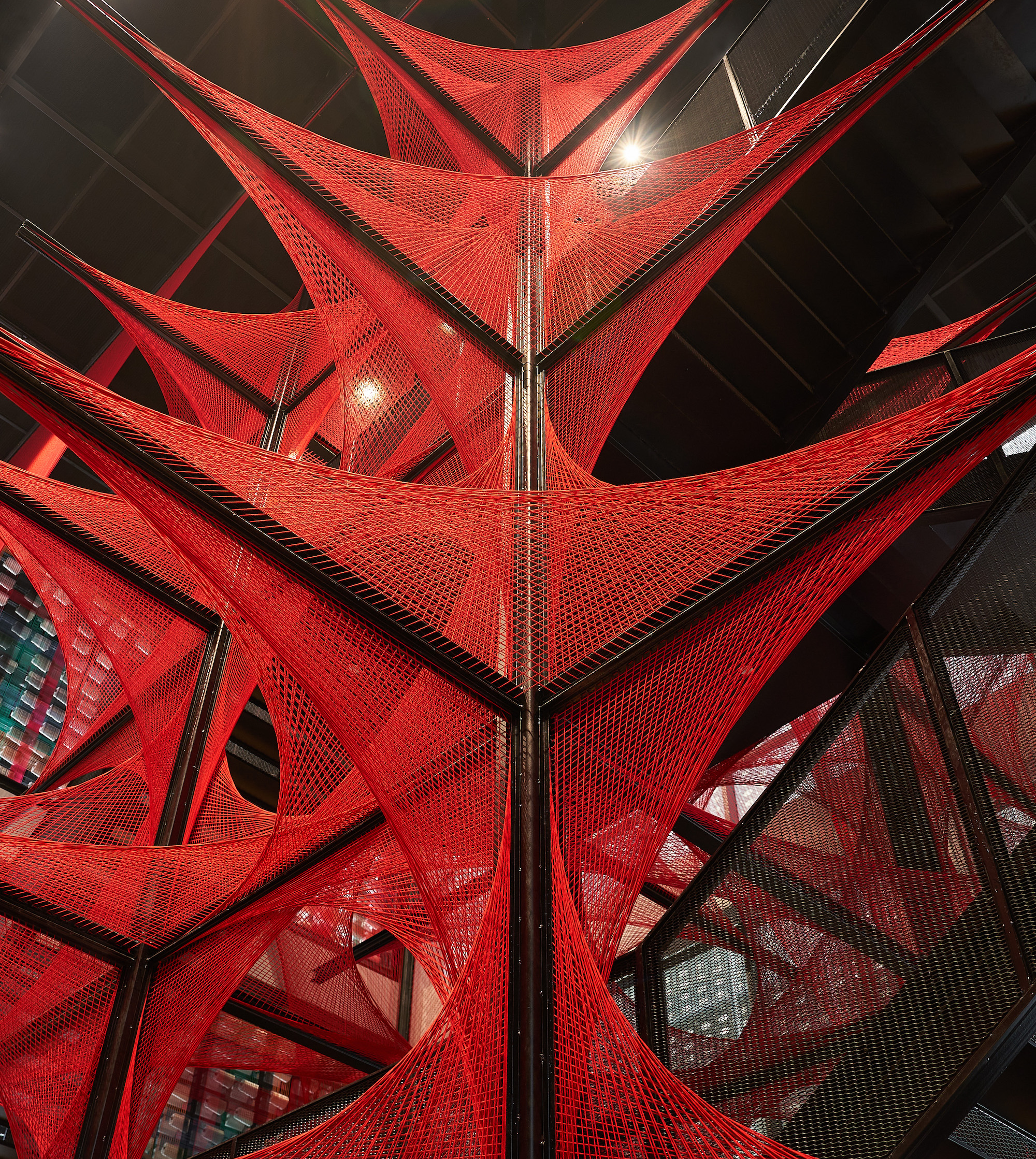
The bottom of the staircases and the installation are raised, and the floor is paved in Xilan Kapu patterns to allow visitors to access the space and sit on the floor. The design also echoes the stilted buildings of the Tujia people and maximizes the space for the entrants to fulfill the spirit of the venue.
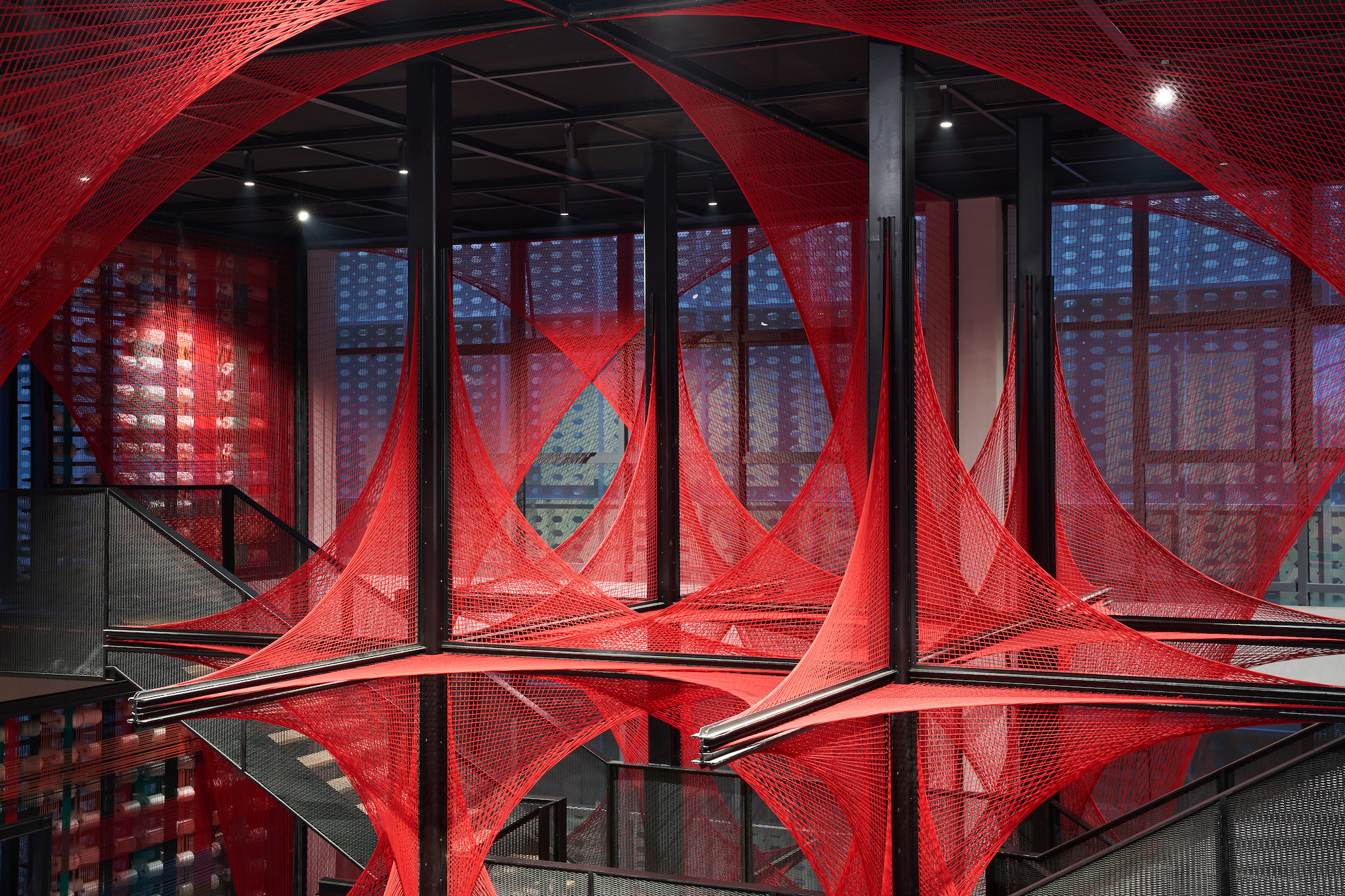
The diamond-shape structure inspired by the iconic pattern of the Tujia brocade is clearly visible from all angles.
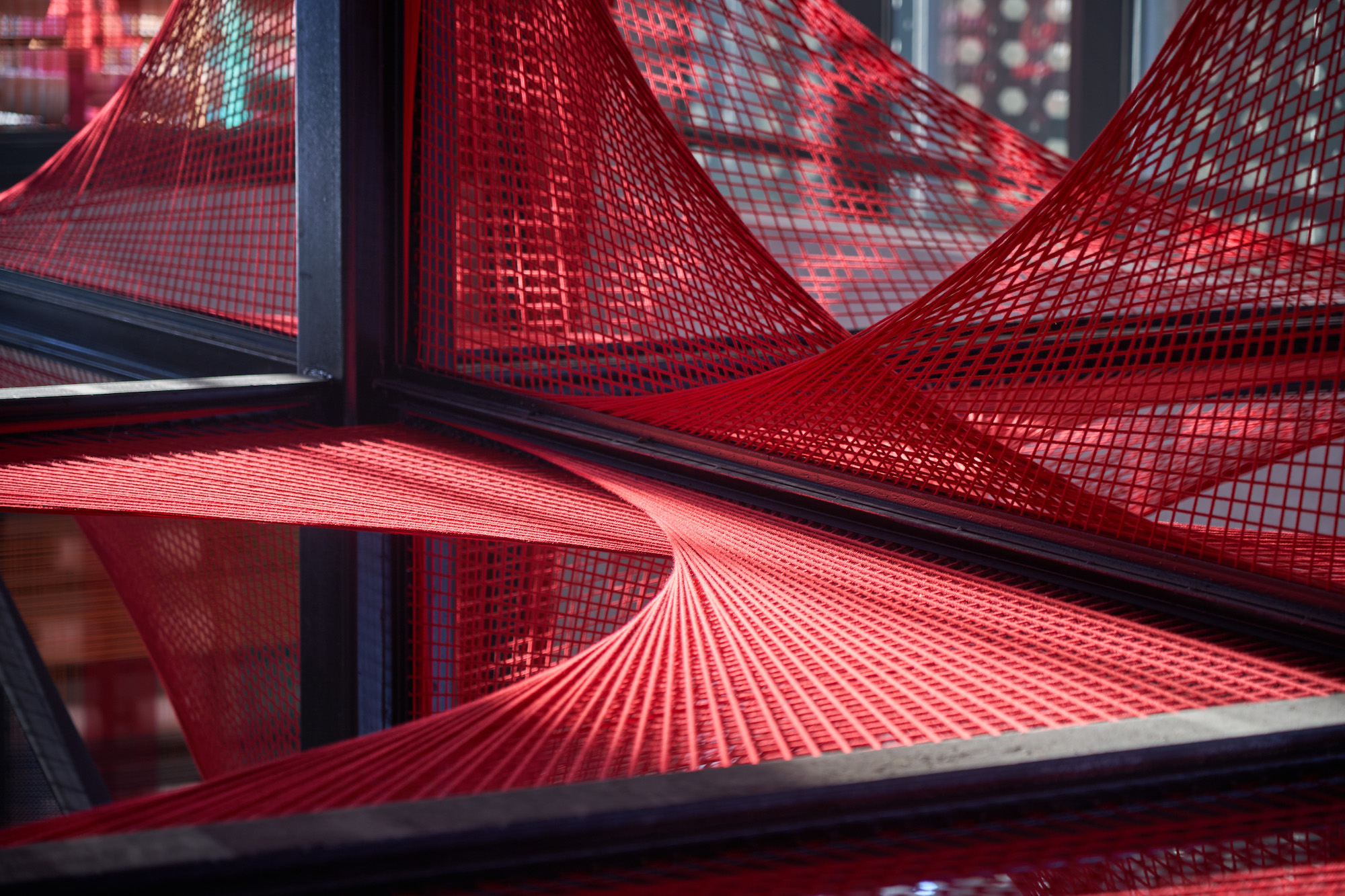
Symbolically interpreting the 30-step process of Xilan Kapu into a three-dimensional piece, the design unifies and highlights the museum’s interior and sparks a sense of wonder that verges on the spiritual, a key aspect of YI+MU’s philosophy.
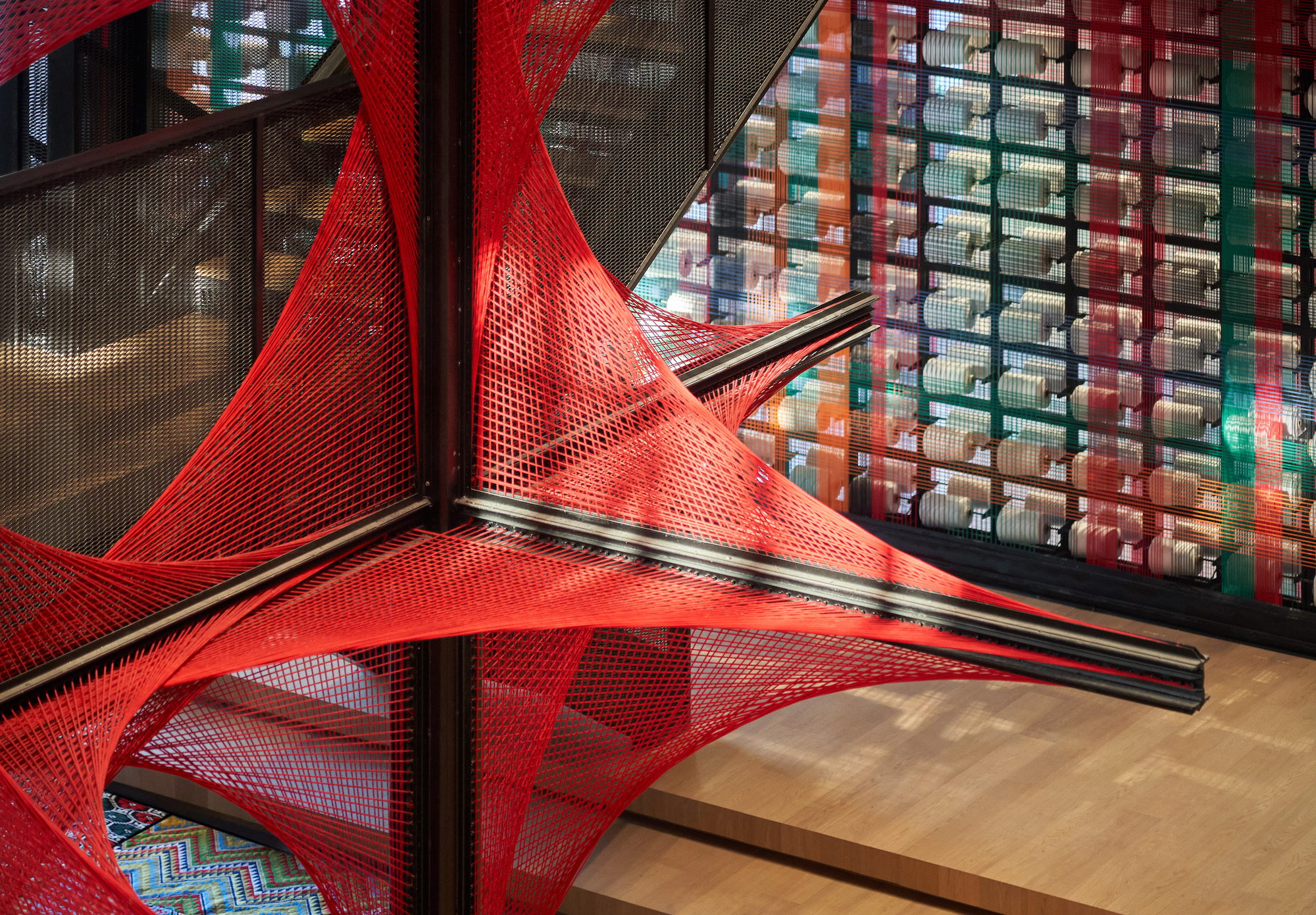
The museum building was completed in 2022 and an opening date is yet to be announced. Find more of YI+MU’s projects on the studio’s website.

Scope of services:Project plan、Interior design
Project aress:China ZhangJiaJie
Project area:1100㎡
Project time:2022
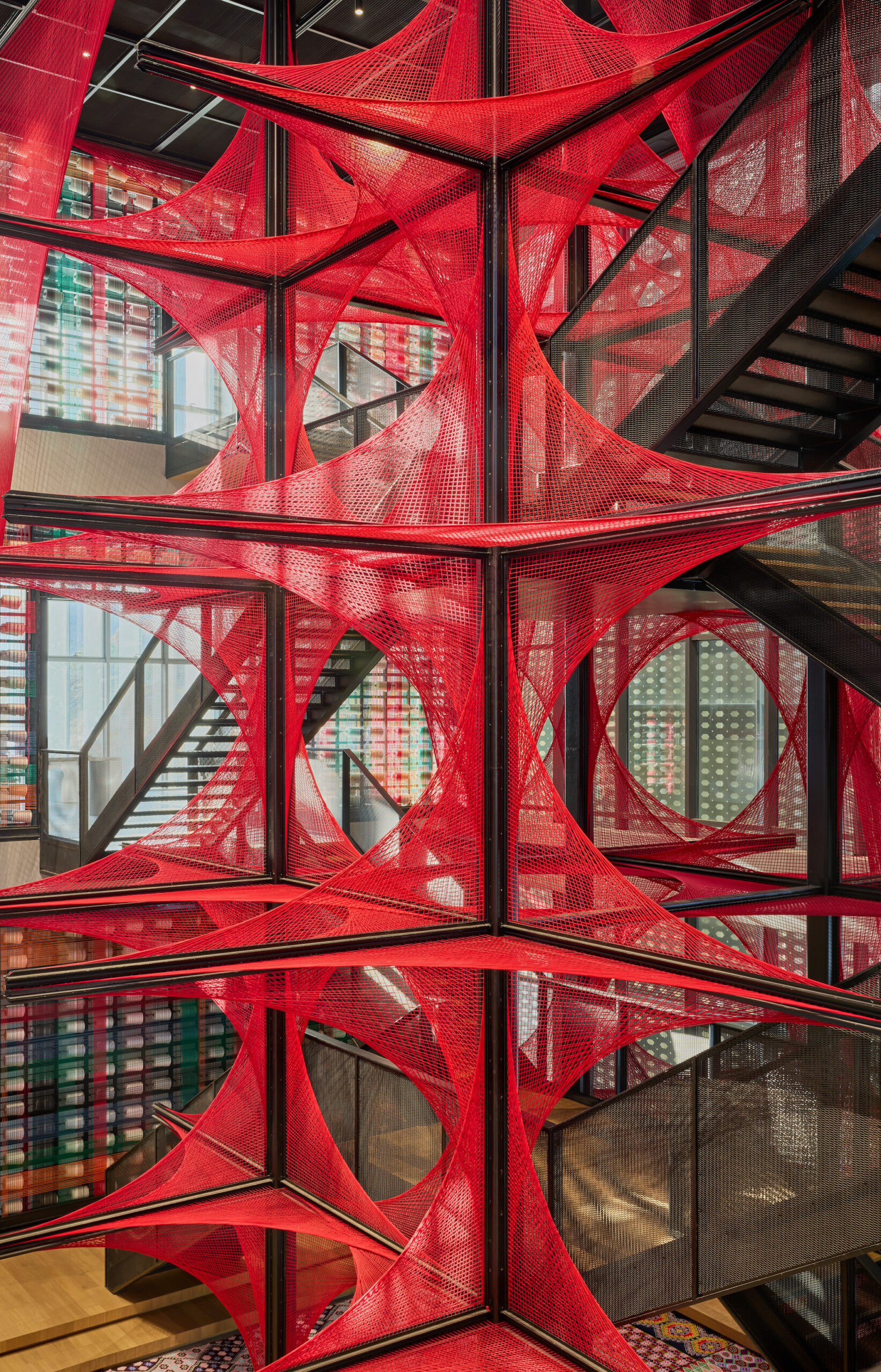
All images © YI+MU, shared with permission





